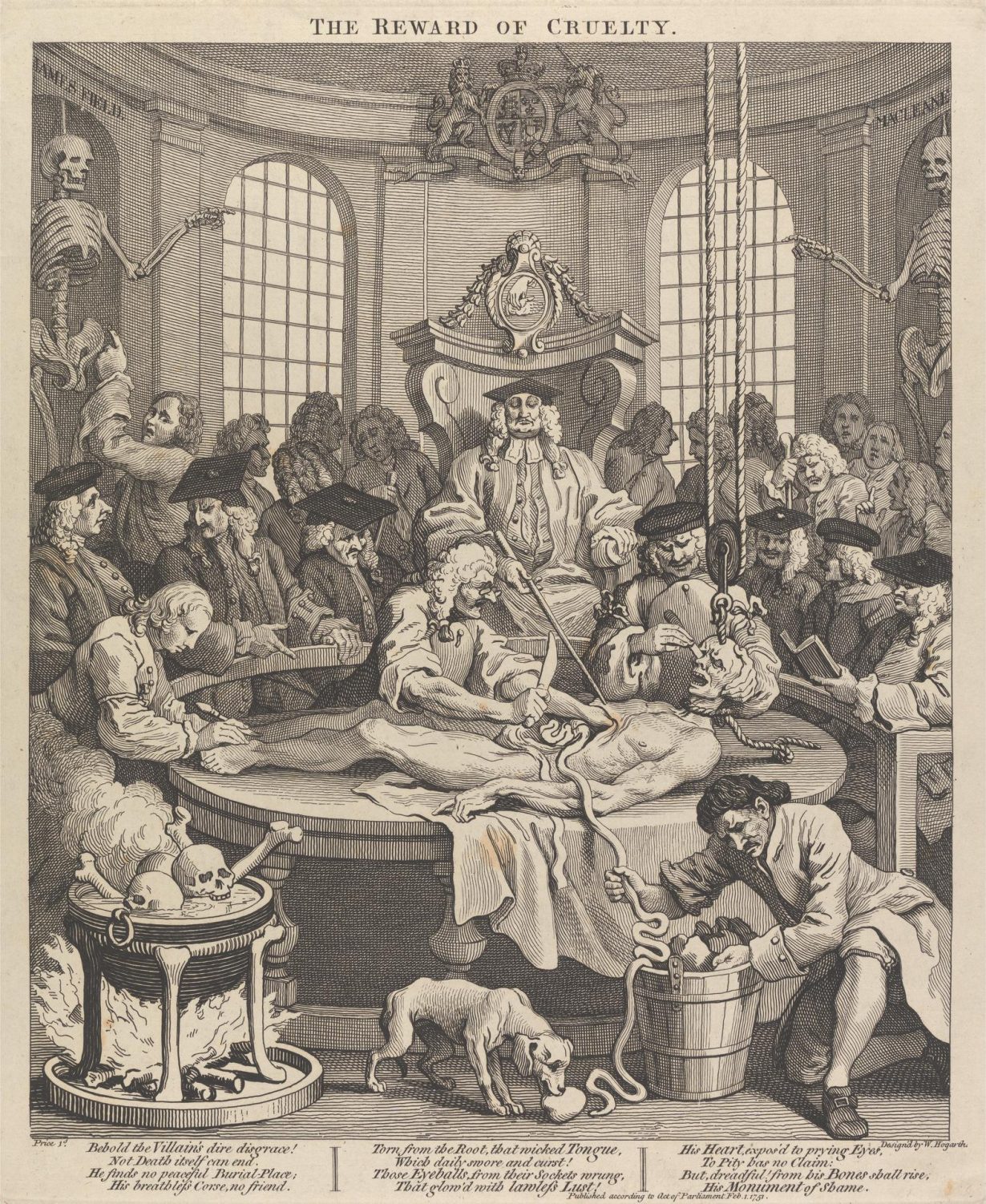We all die, but how we die, according to social historian and bereavement counsellor Molly Conisbee, is culturally and historically contingent

In William Hogarth’s 1750–51 engraving The Reward of Cruelty, the corpse of a fictional murderer, Tom Nero, lies naked on a table, his abdomen hollowed out by four anatomists who dissect him under the public gaze. It’s an admonishing image in which an unsightly death serves as a moral tale, even as it also reminds us that modern medicine was on the rise. We all die, but how we die, according to social historian and bereavement counsellor Molly Conisbee, is culturally and historically contingent. Through the 11 chapters of this book, the author follows the different rituals of death, from practices of mourning and grieving to notions of the afterlife, and explores the ways in which, over the last couple of centuries, ‘ordinary’ people in Britain faced death and participated in its moral economy.
‘Ordinary’ death, to Conisbee, is the ‘everyday’ death of commoners, whose experiences of death are often overshadowed by the deaths of the ‘the wealthy and well connected’ – kings and queens, bishops, prime ministers, heroes and villains. Such extraordinary deaths often launched social change, shaped public discourse and rooted deep into collective memory. Conisbee’s mission here is to argue that ‘ordinary’ deaths are no less significant; that they too shape ‘our lives, politics, beliefs, rituals, culture and even landscapes’. To get there, Conisbee turns to sources such as church records, public censuses and business listings, to piece together speculative biographies of people – nurses, church members, petty criminals, individuals who set up funeral businesses, ran mourning warehouses and served as proto death doulas – who were involved in various aspects of the death economy, and stories about how they, too, faced death.
To die, she argues, is to participate in a variety of socioeconomic relations that are ‘historically, socially and culturally located’. During the eighteenth century, for example, the majority of deaths occurred at home, the dying person generally accompanied by their relatives alongside a professional ‘watcher’; over the course of the century, this predominantly female occupation, involving the ability to read the different stages of dying, was gradually replaced by medical practitioners.
During the Industrial Revolution, urban areas like London saw increasing levels of migration as well as deaths resulting from the industries that grew during that revolution. Higher mortality rates, a growing consumer culture and an urban working-class anxious to look ‘proper’ and respectable contributed to the emergence of mourning paraphernalia – from mourning cards, tea sets and biscuits, to readymade mourning wear ‘in the best taste and latest fashion’ – sold by professional providers. Pubs, too, had a role in shaping how people prepared for the end of life. Burial clubs organised by these community centres were among the first to provide a rudimentary insurance system, when poor working conditions and punitive policies against the urban poor (the Poor Law Amendment Act of 1834, for example, forced those applying for aid to enter the workhouse to ‘earn’ economic relief) made dying a distressing and perilous matter, on top of the direct consequences of the death itself.
Throughout the book there are a lot of esoteric death-related facts that make the very idea of dying something of a curiosity (‘hands of glory’, for example, are the preserved hands of hanged men, believed to be auspicious totems). But beyond these grisly anecdotes, the book aims at a discourse of care: is there a ‘good’ death? Do we, as families and a society, owe debts to the dying, or to the living? Should grief be publicly expressed or remain a private matter? These are difficult questions – against which the book contextualises itself but falls short of answering. You’re left with the sensation that this book is slightly too ambitious in its attempt to be both a moral guide and an informative history. Ultimately, the author’s decision to elevate ‘ordinary’ deaths by framing them as ‘individual events’ and ‘tragedies worthy of consideration’ often forces her to appeal to the reader’s sympathy for the dying individuals. Well-meaning as that might be, it neglects the fact that emotions, too, can be ‘historically and culturally located’. All of which leaves the very notion of how we might write about ordinary death with specificity an open question.
No Ordinary Deaths: A People’s History of Mortality by Molly Conisbee. Profile Books, £22 (hardcover)
From the Summer 2025 issue of ArtReview – get your copy.